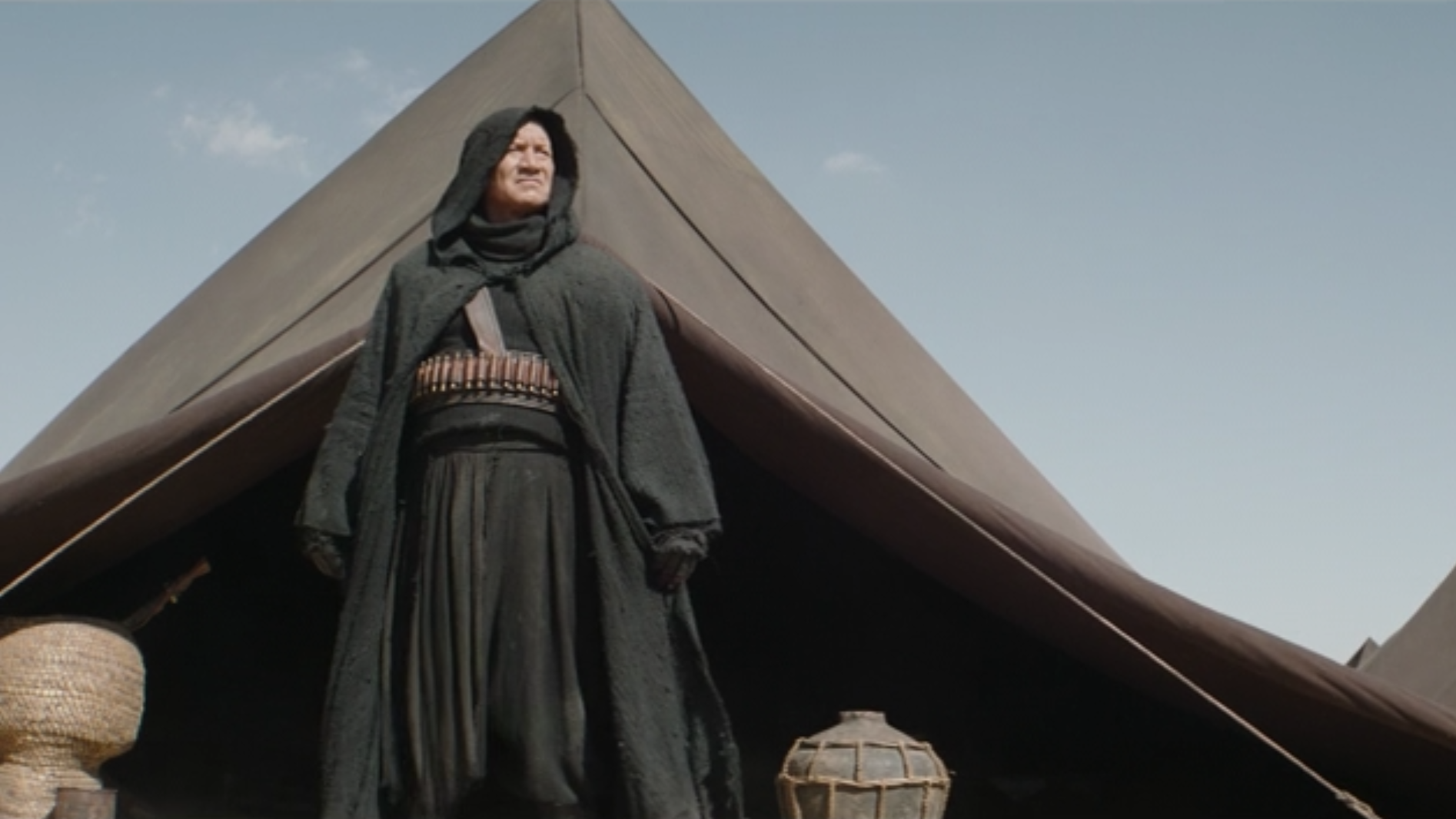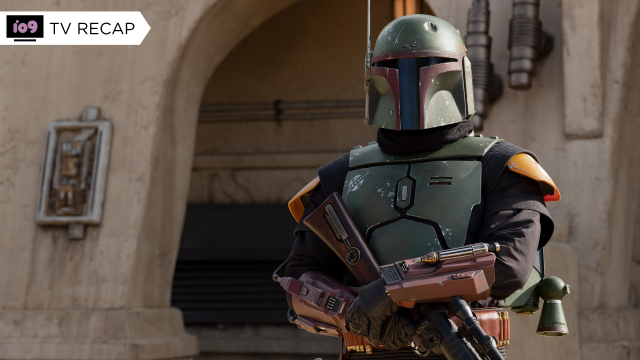The premiere of The Book of Boba Fett painted a portrait of Boba Fett that fans have wanted to see for decades, even if that portrait added little to the larger Star Wars tapestry. Its sophomore episode sees the show start to build Boba into something more.

“The Tribes of Tatooine,” like all Star Wars, is an episode fascinated with the past. On a surface level, this plays out in the franchise’s love language of cyclical narratives and fannish references to the wider universe. The references here, at least so far, are less on the scale of Luke Skywalker showing up to disrupt a story as violently as he can disrupt a hallway full of killer droids. They’re more on the level of Easter eggs: A throwback to Star Wars’ oldest missing scenes here, a nod to the Marvel Comics and The Clone Wars there. The episode’s cyclical narrative plays out in the “present” timeline of the episode, as Boba and Fennec hunt down who sent the assassins that targeted them last week.
As with any bounty-hunting-adjacent Star Wars business, things are rarely as simple as they seem. So when Boba marches into the office of Mos Espa mayor Mok Shaiz — an Ithorian voiced by none other than series producer Robert Rodriguez — seeking answers, he learns that the assassins were actually hired by someone operating out of Hutt space. Or rather someones. We’re quickly introduced to Tatooine’s latest villains, because what does the desert world need after being plagued by a Hutt, if not two of them?
After Boba refuses to hand over his new rule to the unnamed cousins of Jabba, “The Tribes of Tatooine” sets forth its central conflict. Boba establishes himself to the Hutt twins as the new lord of Mos Espa and all the other territories that Jabba owned, only to be threatened in kind with the reminder that, in the twin’s eyes, he is merely a usurper, just a bounty hunter. We’re left to continue this conflict later down the line, as The Book of Boba Fett uses its hero’s rankling at being referred to by his former job to dive back into the past. The show is asking an important question: What is Boba Fett now, if he’s not a bounty hunter?

The answer we’re given is not quite new, as it’s essentially one that we already knew, answered both last week and in the events of The Mandalorian. So “The Tribes of Tatooine” makes up for a lack of freshness by providing a meaty slice of Star Wars action as it dives into Boba Fett’s recent past. The adventure deepens Boba as a character, and also helps to advance another character rebirth, one that like Boba began in The Mandalorian’s second season: The growth of the Tusken peoples as more than the threatening, nebulous “savages” portrayed in the original Star Wars films. It is, admittedly, a growth that has yet to take many further steps beyond simply not treating them as barbarians, leaving them a largely faceless amalgam of tribal culture tropes — but one that is hopefully open for further nuanced exploration beyond this.
The bulk of “The Tribes of Tatooine” takes place in the past, building on the details introduced last week about what happened to Boba Fett after he freed himself from the sarlacc. No longer a prisoner of the Tusken nomads that found him, and more of a wary ally, Boba is given the chance to endear himself to the community by leveraging his skills as a mercenary-for-hire — not for monetary gain or for his own reputation, but to eke out justice on behalf of this persecuted group.
After the Tusken tribe is attacked by an armoured train cutting a path through their ancestral lands — one we eventually learn is smuggling weaponry and spice for the criminal Pyke Syndicate — Boba works with his new allies, embracing tutelage in the Tusken culture in exchange for giving them the tools and knowhow to combat the Pykes alongside. There’s echoes of The Mandalorian season 2 premiere here, which likewise saw Din Djarin and Cobb Vanth work with a group of Tuskens to end a larger threat to Tatooine society, and both climax in grand, suitably explosive Star Wars action sequences. But in The Mandalorian, the Tuskens were more of a tool to be leveraged by the settlers that have called the planet home across generations, to be worked with when needed but otherwise largely kept at arms’ length while its titular hero sought to reconnect with a lost piece of Mandalorian culture, the armour Cobb Vanth had inherited. The Book of Boba Fett offers a twist on this by having Fett — a character seeking identity after losing that iconic armour — essentially adopt the Tuskens as his own, having lost any connection he had to his Mandalorian roots with the loss of both his armour and his father Jango.

“The Tribes of Tatooine” frames this adoption and transformation for Boba as a celebration, even if there is still an element of a kind of an outsider noble saviour coming in to the aid of an othered, indigenous society to the denouement. The day is saved in a thrilling action sequence, culminating in Boba and the Tuskens successfully destroying the train and sending a message to the Pykes. The Tuskens accept Boba as one of their own with the ritualistic forging of his own gaderffii stick, and a gift of the robes we first saw him wear back in The Mandalorian. But while this serves to bring us further details in the previously-unseen path to the Boba we know now, it also layers something much more melancholic into Boba’s character, adding an emotional context that’s arguably far more profound than simply explaining why Boba was dressed the way he was before he got his armour back. Those black robes are now a symbol of the identity Boba found for himself after his “death” and rebirth, their importance as fundamental to him as reclaiming his family’s armour. In giving us this context, we’re asked to consider that in wearing both these identities together now, he’s embracing both of these sides of the person he has become as he moves ahead in this second life, and that Boba has put aside the man he was before the sarlacc. That the wandering lone hunter — the man Jabba’s cousins still believe him to be — is gone, replaced by something new and more meaningful.
In leveraging its fondness for Star Wars’ past, “The Tribes of Tatooine” elevates that past and adds intriguing texture to Boba’s return. The Book of Boba Fett has proved there’s enough potential in that texture to make its titular hero ripe for exploration. Now it just has to carry it forward, and show how it can help shape his future.
Wondering where our RSS feed went? You can pick the new one up here.
